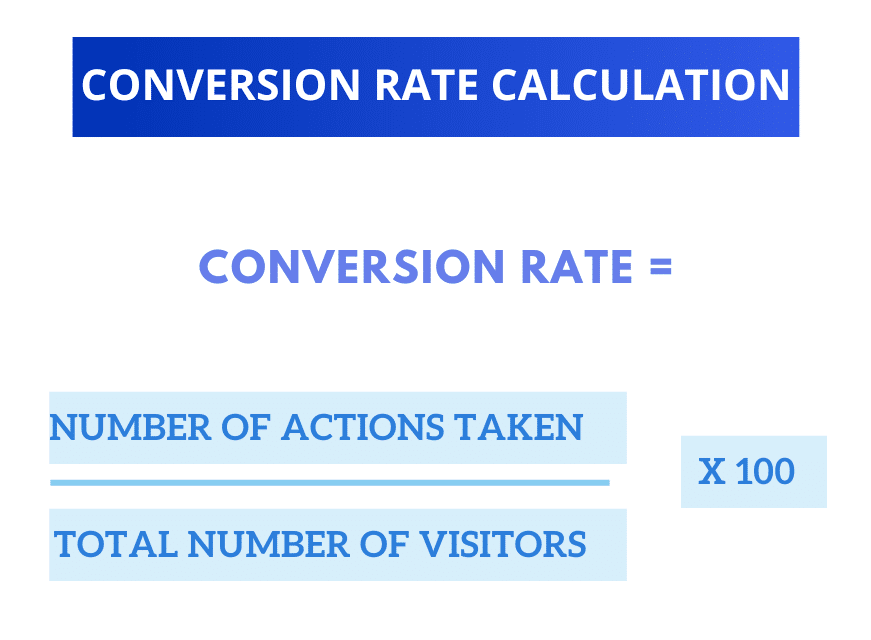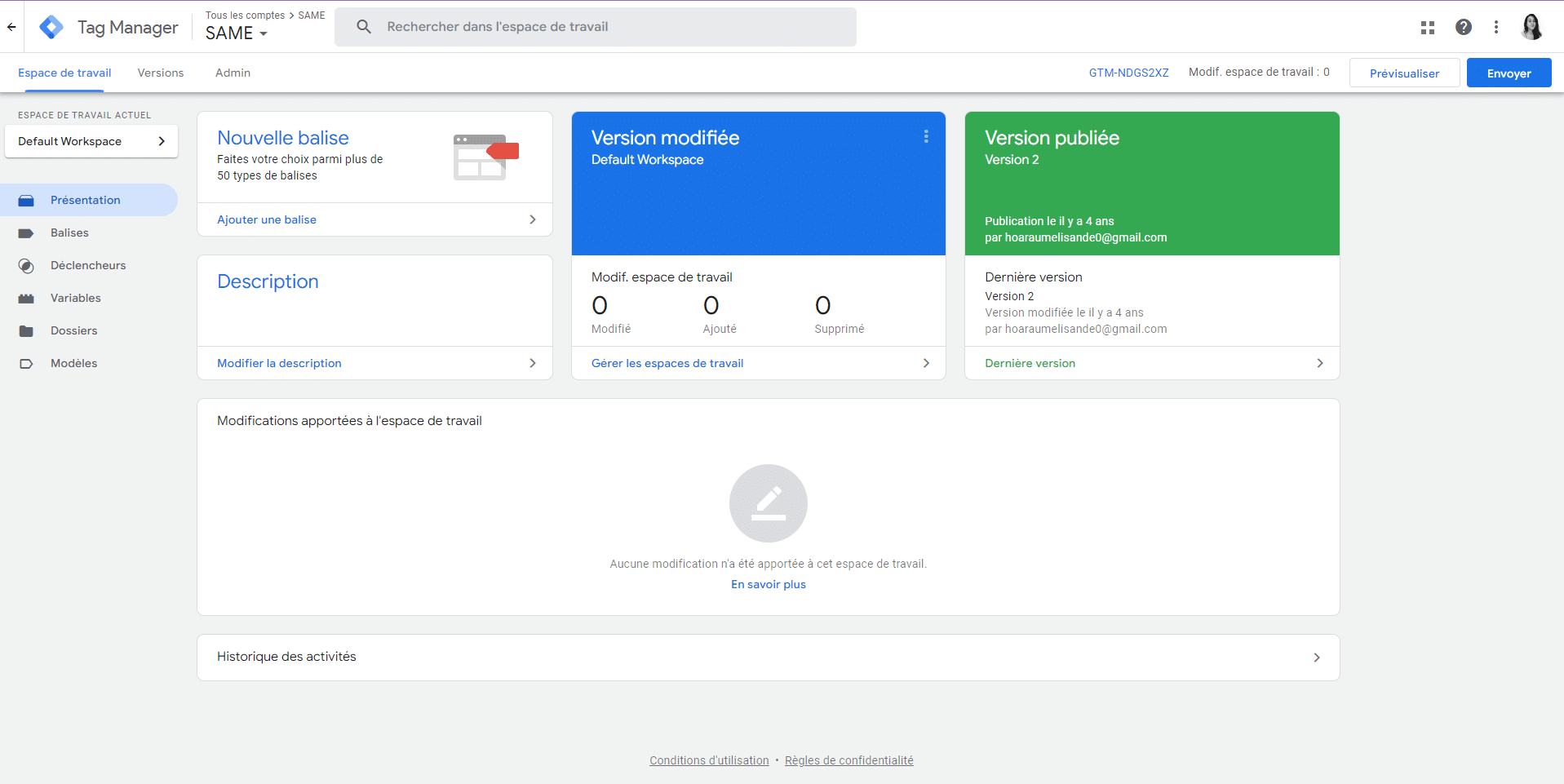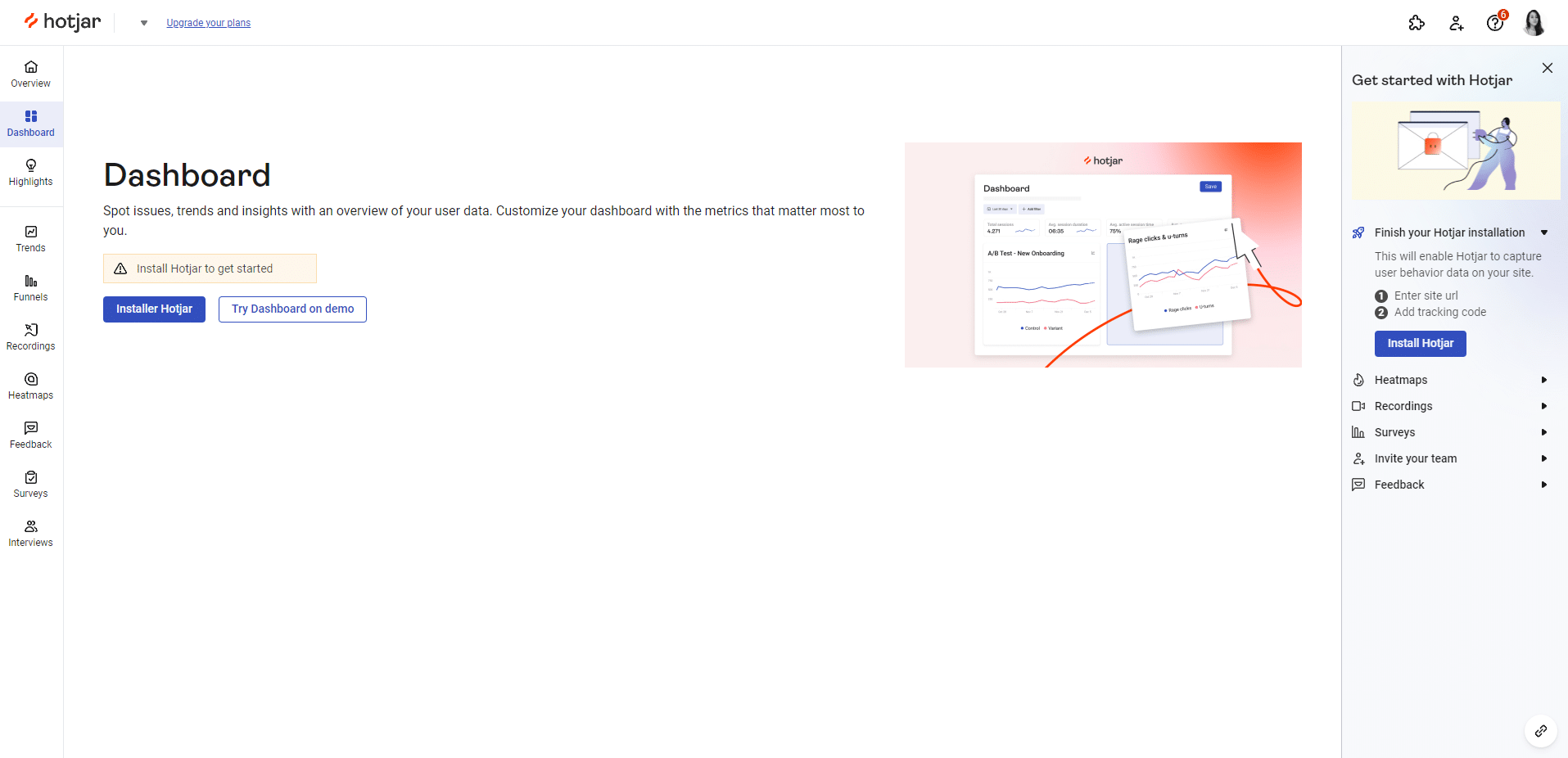- Conversion rate: Definition and how to calculate it
- Why monitor your conversion rate?
- Examples of conversion rates based on your objectives
- Interpreting conversion rates
- What are the tools for measuring your marketing conversion rate?
- 5 tips for improving your conversion rate
- Conclusion of the Conversion rates article
When it comes to calculations, there aren’t many people left 🏜️. Today, we want to change that! So we’re going to talk to you about the conversion rate. How to calculate it, understand it, use it and, above all, increase it. Come on, let’s have some fun!
On today’s agenda:
- The definition of conversion rate.
- Why track ➡️ this metric.
- Some examples.
- Interpreting the conversion rate.
- The ⚒️ tools to use.
- Tips for boosting your conversion rates. ✈️
Conversion rate: Definition and how to calculate it
The conversion rate is a key indicator 🗝️ in online marketing. It measures the percentage of visitors or users who carry out a desired action on your website, such as making a purchase, subscribing to a newsletter or downloading a document.

Calculating the conversion rate is very simple. Simply divide the number of actions carried out by the number of visitors, then multiply the result by 100 to obtain a percentage.
For example, if you had 1000 visitors to your site and 50 of them made a purchase, the conversion rate would be 5% (50/1000 x 100).
To make things clearer, here’s the calculation 👇.
Number of actions carried out / Total number of visitors x 100
This figure is invaluable because it gives you a clear idea of the effectiveness of your marketing campaigns. But it also gives you insight into your website’s ability to turn visitors into customers. It allows you to identify the weak points in your conversion funnel and optimize your strategy to achieve better results.
If you can understand and regularly measure your conversion rate, you can make informed decisions 💡 to maximize your business performance and achieve your growth targets.
Don’t forget that it can also be called the transformation rate.
Landing page conversion rate
The landing page is often used as part of inbound marketing. It is used to convert visitors into leads and sometimes into customers 💰. The aim is to get your prospect to take a specific action (which you will have chosen beforehand) on this page.
Consequently, it needs to be a good one so that it converts as well as possible. The estimated conversion rate for a landing page is around 10% in B2C and around 13% in B2B.
Why monitor your conversion rate?
Understanding the conversion rate is essential for assessing the effectiveness of your marketing campaigns. And yes, by measuring the conversion rate, you can determine how many visitors are really engaged 💍 and taking concrete action on your website. This allows you to quantify the return on investment of your marketing efforts.
By understanding the conversion rate, you can identify which campaigns, channels or messages 📩 are performing best. This will allow you to allocate your resources effectively and adjust your marketing strategies accordingly. If you notice that a specific campaign is generating a high conversion rate, you can invest more in that strategy to get better results.
What’s more, understanding the conversion rate allows you to continually optimise your conversion funnel. By analysing the stages in the process, you can identify obstacles and weak points. This gives you the opportunity to make targeted improvements 🎯 to make it easier for visitors to convert into customers.
Examples of conversion rates based on your objectives
Conversion rates vary according to the specific objectives of a website or marketing campaign. There are a multitude of conversion rates, but here are the ones we’ve decided to present to you: 👇
Conversion rate: Online sales
- Here, it measures the percentage of visitors who make a purchase on an e-commerce site. However, this rate can vary considerably depending on the industry and the type of products or services on offer.
As a general rule, a rate of 1% to 3% is considered average, while a rate of 3% to 5% is considered good. However, some well-optimised sites can achieve even higher conversion rates 📈.
Conversion rate: Subscriptions
- This rate measures the percentage of visitors who subscribe to a service or newsletter 💌. This rate can vary depending on the quality of the content offered, the relevance of the offer and the ease of the subscription process. A conversion rate of 10-20% is generally considered good 👍 for subscription forms.
Conversion rate: Downloads
- This rate refers to the percentage of visitors who download content, such as an e-book 📖, guide or app. The conversion rate depends on the appeal of the content on offer and the ease of the download process. Rates for downloads can vary from 5% to 30% depending on the relevance and perceived value 👀 of the content.
Conversion rate: Advertising clicks
- This measures the percentage of people who click on an ad in relation to the total number of people exposed to the ad. This rate is important for assessing the effectiveness of online advertising campaigns. Conversion rates for ad clicks can vary considerably depending on the advertising platform, the targeting and the relevance of the ad. They can generally vary between 1 and 5%.
It is important to note that these rates are given as an indication 💡 and can vary depending on many factors such as :
- ➡️ The sector of activity.
- ➡️ The quality of the user experience.
- ➡️ Competition.
- ➡️ Marketing strategies in place.
The aim is to identify opportunities for optimisation to improve these rates and achieve the best possible results for each specific objective.
Interpreting conversion rates
Interpreting a conversion rate involves understanding what this figure represents and how it reflects the performance of your website or marketing campaigns. Here are the key steps 🗝️ for interpreting a conversion rate:
- Understand what it is: As you’ve been told, it’s the percentage of visitors who have carried out a specific action out of the total number on your website. It is expressed as a percentage.
- Identify the conversion objective: It is essential to know what specific conversion objective you are measuring. Is it sales, subscriptions, downloads or clicks on adverts 🤔?
- Compare with the targets set: Compare your current conversion rate with the targets you set beforehand. If your conversion rate is below your expectations, this may indicate that improvements are needed to increase it.
- Identify variations: Run tests.
- Analyse trends: Monitor 👀 conversion rate trends over time. Fluctuations can be normal, but significant and continuous drops could signal problems that need to be resolved.
- Compare with the industry: do an industry benchmark to get a better idea of how you’re performing against your competitors.
- Identify potential ❌ problems: If your rate is low, look for potential problems that could be deterring visitors from converting. Take inspiration from your competitors.
- Measure the effectiveness of your campaigns: If you measure the conversion rate of specific marketing campaigns, use it to assess the effectiveness of these campaigns. This will enable you to make more informed decisions about your marketing budget and strategies.
What are the tools for measuring your marketing conversion rate?
There are several powerful tools for measuring this KPI and analysing your website’s performance. Here are just a few of them:
- Google Analytics: This is one of the most widely used web analysis tools. It provides detailed information about your site’s traffic, user behaviour, traffic sources and conversion rates. What’s more, you can track conversions for specific objectives, such as sales, subscription forms, downloads, etc. This tool is free and relatively easy ✅ to integrate into your website.

- Google Tag Manager: Another Google tool that makes it easy to manage tracking tags and conversion pixels on your website. It will also allow you to easily add and modify tags without having to touch your site’s code, making it simpler to track conversion rates for different actions.

- Hotjar: This is another user experience analysis tool that offers heat maps, session recordings and surveys to better understand your visitors’ behaviour. This helps you identify weak points in your website and optimise the user journey.

- Optimizely: Website optimisation tool that lets you create A/B tests. But also multivariate tests to compare different versions of your pages. This helps you determine which variations convert best.

- Mixpanel: This is an advanced analytics tool that focuses on tracking 👣 user actions. It allows you to track specific events and conversions that are important to your business, which helps you understand how users interact with your site and thus optimise conversion rates.

5 tips for improving your conversion rate
If you want to boost ✈️ your sales, and consequently improve your conversion rate, we’re going to give you our top tips for doing just that.
#1 Know your target audience
As you may (or may not) already know, you don’t sell socks to a penguin 🐧 (that’s an expression we just made up). In fact, what we’re trying to say is that you’ll need to know your target audience before you can hope to increase your conversion rates. And when we say “know”, we mean in detail. And there’s only one way to do that: the persona. It’s an essential step if you want to sell.
To set up your persona, you’ll need the following information:
- Name and surname (chosen by you).
- Their age.
- Where they live.
- Marital status 💍.
- The number of children your target may have.
- His/her profession.
- His income 💰.
And of course, you can add any other information you feel is relevant to your target. If you’d like to find out more, take a look a tour guide to personas.
#2 Analyse and optimise your website
To improve your conversion rate, you’re going to have to go through the analysis phase. That’s right, you’ll need to review these key stages 👇:
- Use the right analysis tools. We gave you a list before this article, so don’t hesitate to use it! You can use Hotjar, Google Analytics, to get accurate data. Precise data on visitor behaviour on your site, your most popular pages, bounce rates, etc.
- Identify high-potential pages: Analyse the pages on your site that have high traffic but a low conversion rate. These pages may offer opportunities for optimisation to increase conversions.
- Analyse conversion paths: Follow the path of prospects from their first visit to conversion. Identify the stages where users often abandon the conversion process (or their shopping basket) and look for ways to reduce friction or obstacles.
- A/B testing: Make comparisons between different variations of pages or elements on your site. Test button colours, texts, images, etc.
- Monitor your performance regularly: The web evolves rapidly. So it’s important to monitor your site’s performance regularly. Analyse the data, take user feedback into account and make ongoing improvements to optimise your conversion rate.
#3 Create persuasive content
Creating persuasive marketing content is key to getting visitors to your website to take specific actions, such as signing up for a newsletter or buying a product. To succeed it’s important to know your audience and use persuasive language.
Here’s what we do at Waalaxy in one of our lead magnets 👇:
Authentic stories and testimonials from satisfied customers reinforce the credibility of your offer. Use attractive visuals to capture attention and apply the principles of persuasive psychology ethically. You can use AI for sales prospecting tools to help you.
By remaining transparent and honest, you will increase your chances of converting visitors into customers. And of course, if you want to have fun, do it!
Copywriting techniques
To create persuasive content, you’ll need to learn copywriting. It’s a powerful strategy for influencing users’ decisions and getting them to take specific actions on your site. Here are the elements you’ll need to focus on:
- 💥 A catchy headline. This is the first element your users will see. Make sure they’re punchy and captivating especially in your emails.
- Create a sense of urgency ❗: Encourage your users to act quickly by using words: “Limited offer”.
- Choose your words carefully 👄. Indeed, certain phrases or words have a powerful emotional impact on users.
- 💓 Create an emotional link: Connect with your users by evoking positive emotions.
- Use social proof: Highlight customer testimonials, reviews or statistics to reinforce your credibility.
- Use storytelling: Tell compelling stories that illustrate how your product or service has had a positive impact on the lives of previous customers.
Using these techniques can significantly influence users’ decisions and increase your conversion rates. However, it is essential to use these methods ethically and always provide real value to your users. Your content must be honest and aligned with what you can offer to establish trust.
#4 Optimise your calls to action
Calls to action (or CTAs) play a crucial role in converting visitors into customers. A CTA is a text or design element 🖼️ that prompts users to perform a specific action such as “buy now” or “sign up”.
The importance of calls to action lies in the fact that they guide visitors throughout their journey on your site. They clearly indicate what you want your visitors to do and encourage them to take an action that brings them closer to their goal 🎖️.
Don’t forget that these must be clear and must guide your prospect. They eliminate any potential confusion and guide users to the next stage in the conversion process.
Of course, a well-designed and well-placed CTA can significantly improve your conversion rate 🤑. And obviously, you can create a sense of urgency with that CTA.
By using compelling language, creating a sense of urgency and placing them strategically, you can maximise the impact of your call-to-actions and improve your site’s conversion efficiency.
#5 Make the conversion process easier
Keep in mind that you need to reduce friction and obstacles to optimise your conversion process. Frictions ❌ and obstacles are elements that make it harder for visitors to take a desired action. This could be registering, buying a product or service, or filling out a form.
To optimise this process, here’s what you can do:
- 🟢 Simplify your forms: Shorten registration or payment forms by only asking for essential information.
- 🟢 Offer easy connection options: Offer connection facilities via Google or Facebook, for example.
- 🟢 Provide real-time assistance: Integrate live chat or customer support options to help visitors with questions.
- 🟢 Optimise loading speed: A slow website can deter visitors from staying and taking action, so optimise loading time.
- 🟢 Eliminate distractions: Avoid superfluous elements or intrusive adverts that could distract visitors from their initial objective.
- 🟢 Highlight the benefits: Clearly communicate the benefits and value of your offer right from the start.
- 🟢 Carry out A/B tests: Compare different versions of pages, forms and titles to identify potential friction and find effective solutions.
Conclusion of the Conversion rates article
We’re coming to the end of this article 😔 but don’t worry, there’s still more to learn at Waalaxy. The conversion rate is one of the key indicators that will allow you to measure the effectiveness of your website or marketing campaigns. It is a key performance indicator that will offer you several advantages and opportunities. That’s why we’ve looked at:
- ➡️ Its definition and how to calculate it.
- ➡️ Why track this metric.
- ➡️ Examples.
- ➡️ Interpreting the conversion rate.
- ➡️ Tools you can use.
- ➡️ Tips for boosting your conversion rates.
Article FAQ
It’s not time to leave yet. Because we’re going to give you some ideas that may help you to perfect your knowledge 🧠 of conversion rates.
How do you calculate the e-commerce conversion rate?
The e-commerce conversion rate is calculated by comparing the number of conversions (for example, the number of purchases) with the total number of visitors to your website. If you’ve reached the beginning of this article, you’ll know how to do the calculation.
To illustrate the calculation, let’s assume that your website received 10,000 visitors during the month and that 500 of them made a purchase.
Your conversion rate is therefore (500/10,000) x 100 = 5%
In this example, the e-commerce conversion rate is 5%. This means that 5% of visitors to your site have made a purchase. It’s important to note that the conversion rate can be calculated for different conversion actions. Depending on your objectives, you can adjust the formula to calculate the conversion rate that interests you.
What is the average conversion rate for an e-commerce site in France?
The avergae conversion rate for an e-commerce site in France is around 2.96%. 🤑
What is the right conversion rate?
There is no good conversion rate that is universally applicable to all companies or sectors, because it can vary considerably depending on a number of factors such as the type of website, the industry, the target market, the level of maturity of the site, the quality of the traffic, etc. Of course, we’d all like to have a 100% conversion rate, but that’s impossible to achieve.
The conversion rate that is considered “good” will therefore depend on the specific context of your business. The important thing is to monitor the conversion rate over time and seek to improve it continually. And the aim is generally to achieve as high a rate as possible to maximise ✅ the effectiveness of your website or marketing campaigns.
And that’s now the end of our article, we hope you’ve understood everything about the conversion rate and can increase it 📈 a little more.













